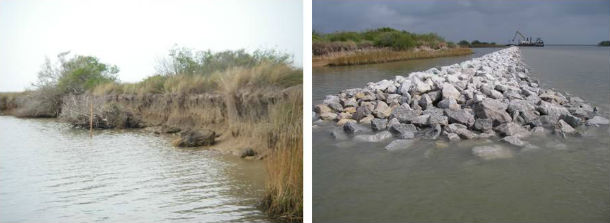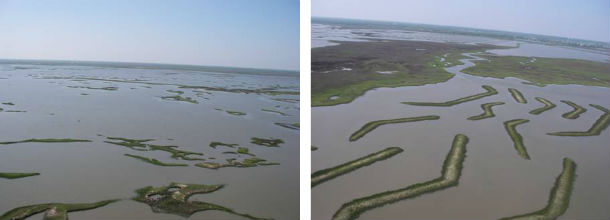Wetland Conservation and Management for the Texas Central Coast
Erosion Control for Coastal Marsh
Many coastal marshes along the Texas Coast are experiencing high rates of erosion. Most of the erosion is associated with the Gulf Intercoastal Waterway and other shipping canals that bisect coastal marsh. The intensive wave action from barge traffic and wind is eroding the shoreline at a rapid rate. Much of this shoreline acts as a protective barrier preventing saltwater from damaging sensitive coastal marsh. Breakwater structures can be put in place along the canal shoreline to reduce wave action and subsequent erosion. In some cases sediment will accumulate and vegetation will grow on the protected side of the breakwater.

Where saltwater intrusion has occurred in coastal marsh that has subsided, lush wetlands containing emergent and submergent vegetation are slowly being converted to open water devoid of any habitat for waterfowl and other wetland birds. Vegetation is lost from the increased salinity and the exposed marsh sediment is subsequently eroded by wave action. In this instance, vegetated terraces or mounds built in the impacted open water zone can reduce wave energy, improve water clarity, and limit further loss of shoreline. These structures also increase shoreline and vegetated shallow water habitat used by aquatic and terrestrial wildlife and offer potential nesting sites for birds.
